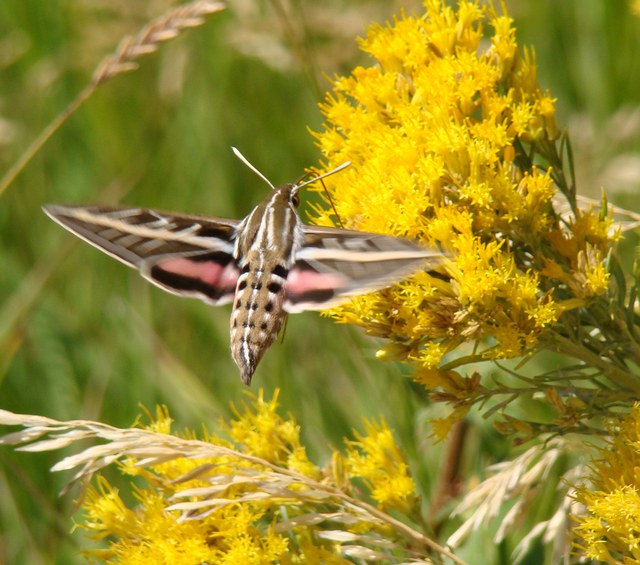When you picture flowers being pollinated, what do you see? Birds, bees, and butterflies, flitting and buzzing from flower to flower? Sunshine and warm temperatures? What about moths under the silent cover of night, sipping on nectar? Or beetles plodding from flower to flower with only the moonlight and the aroma of blooms to guide them? While most of us turn to daytime pollinators when we’re thinking about pollination, today we’re shining a light on nocturnal pollinators!
What creatures pollinate at night? While there have not been many studies done on night pollinators, we do know that moths are the largest group of night pollinators. Bats are also night pollinators, but not in Central Oregon, where bats feed exclusively on insects (you have to head further south for nectar-sipping bats!). Night pollinators are rounded out by beetles, a few species of bees, and to a lesser extent, flies, crickets, and ants.
How important are night pollinators?
Limited studies have shown that night pollinators are quite important! In fact, 1/3 of plant families have nocturnal pollinators. Most moths are generalists, which means they don’t have a specific plant they pollinate, but are happy to sip at most plants. In addition, they could be very important to plant genetic diversity since they travel long distances compared to other pollinators like bees. In a study in the northeast US on lowbush blueberry pollination, it was shown that a significant amount of pollination occurred at night.
Threats to night pollinators
Night pollinators experience many of the same threats as daytime pollinators. This includes habitat loss, pesticide, disease, and invasive species. In addition, light pollution and air pollution greatly impact night pollinators. Since many night pollinators communicate and move via scent, air pollution can impact their ability to communicate and find food.
How does light pollution affect night pollinators? Let’s quickly look into the physiology of moths. Moths navigate by transverse orientation, which means they travel based on the angle of moonlight. Bright lights cause moths’ transverse orientation to not work properly, since those bright lights look like moonlight! Without this important navigation tool, moths struggle to pollinate and find mates. It may also affect their ability to evade predators.
What can I do for night pollinators?
To start with, turn off those lights! Turning off exterior lights or using dim low-voltage lights or motion activated lights helps our night pollinators navigate. Shading windows in lit rooms at night is also beneficial.
If you’d like to attract some nocturnal pollinators to your yard, find plants that have strong fragrance like honeysuckles or summer phlox. You'll also want to include plants that reflect the moonlight—white or pale flowers, shiny leaves, and silver or gray foliage.
In addition, take care with things you’d do for daytime pollinators—don’t use pesticides and get rid of invasive weeds that out-compete native plants.
The next time you’re out at night, just think: you’re not the only one enjoying the evening. There are many pollinators moving about, trying to find their next meal under the moonlight.
Sources:
- Pollination at Night webinar, The Xerces Society
- The Night Shift: Moths as Nocturnal Pollinators, The Xerces Society
- Lights at Night Turn Nocturnal Pollinators Off, International Dark-Sky Association
- Nocturnal pollination in lowbush blueberry, Poky Ecology
Learn more about pollinators:
- Pacific Northwest Moths and BugGuide.net are great resources for more about moths and other insects
- Pollinator Plants to Grow


